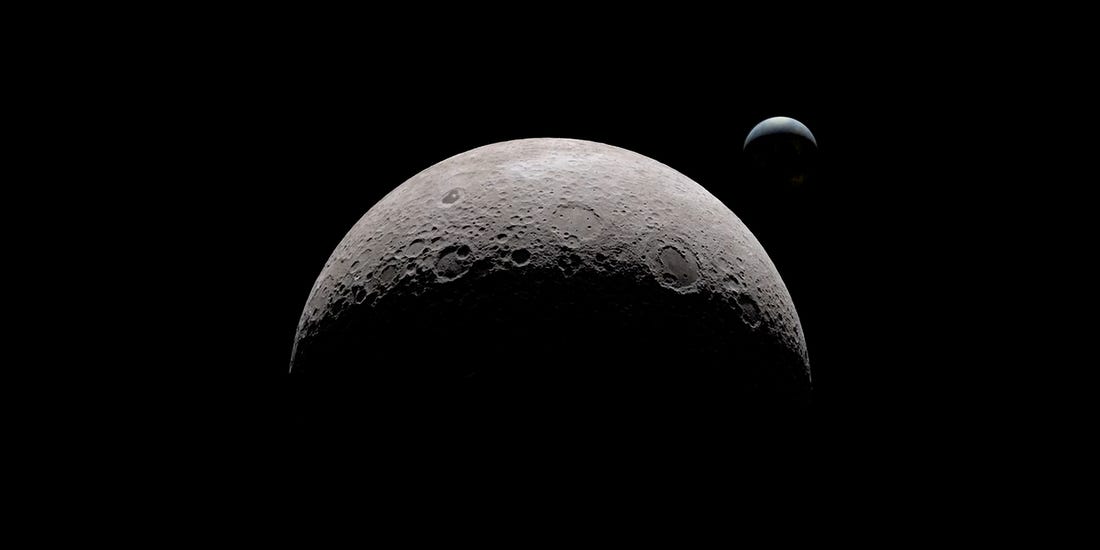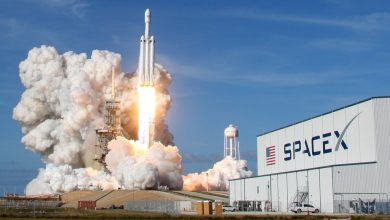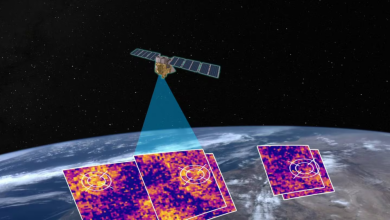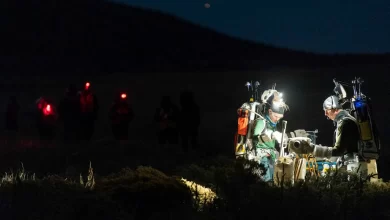NASA announces exposing dark side of moon and solving mystery of its brightness
ناسا تعلن عن كشف الجانب المظلم من القمر وحل لغز سطوعه
How bright is the Moon? Given its relatively close proximity to Earth, and the fact that we’re looking at it all the time, you’d think that would be an easy question to answer. Turns out you’d be wrong.
We’re usually looking at the Moon from Earth, through the atmosphere. That creates just enough interference that the amount of sunlight reflected off the lunar surface – a measurement called spectral irradiance – cannot be calculated with more than 97 percent accuracy.
But don’t worry. Scientists have a plan. And it involves the use of a high-altitude NASA plane that soars as high as 21.3 kilometres (70,000 feet). This places it right up in the stratosphere and above the troposphere, which is the thickest layer at the base of Earth’s atmosphere.
From this vantage point, 95 percent of the atmospheric interference is down below, enabling much clearer pictures of the Moon. So, scientists from the National Institute of Standards and Technology (NIST), NASA, the United States Geological Survey (USGS) and the University of Guelph hope that this new plan could bring the accuracy of their measurements to above 99 percent.
The mission, called the Airborne Lunar Spectral Irradiance Mission (air-LUSI), conducted a series of flights on the ER-2 plane in mid-November.
They’re not just trying to calculate the Moon’s brightness across all its phases just for funsies (although it does sound like a fun project).
Having these data on hand is actually important to us in other ways, because the Moon’s brightness can be used to calibrate satellites that sit in Earth orbit and monitor the planet below. These can be weather satellites, or environmental satellites, use to track things like crops, droughts, even algal blooms.
To calibrate their sensors, these satellites take an image of a source with known brightness, and compare that image with others of the source it has previously taken. If the new image is not consistent with the known brightness of the source, the instruments aboard the satellite know that the sensor needs to be recalibrated, or the sensitivity adjusted.
Many satellites are equipped with something called a solar diffuser panel for this purpose. The sunlight reflects off the diffuser, the satellite images it for calibration, and you’d think Robert was your mother’s brother, right?
Well, not so fast. For one thing, these diffusers degrade over time, thanks to the Sun’s harsh radiation in space, where it is free to conduct its shenanigans unmitigated by an atmosphere. For another, the Moon reflects sunlight more stably, and its brightness is more similar to Earth.
So, theoretically, the Moon would be the perfect calibration source. All you’d need are the relative positions of Earth, Moon and satellite, and you should be able to predict the Moon’s brightness – if you had accurate measurements for spectral irradiance, or the amount of energy per unit area in separate wavelength bandwidth.
So, in a series of flights aboard the ER-2 plane, the team took measurements of the moonlight across the entire visible and into the near-infrared spectrum, from 380 to 1,000 nanometres. Each bandwidth they measured was just a few nanometres wide, in order to create a highly detailed lunar brightness profile.
The team are still analysing those data, but it’s also only a part of the picture. Because the flight was across just a few days close together, it’s provided just a small snapshot of the Moon, which varies in brightness from a particular vantage point based on its phase, and its relative position to the Sun and Earth, which is on a 19-year cycle.
More flights will be needed, probably over a three-to-five-year period (not 19, thankfully!), in order to build a solid and reliable model of the Moon’s brightness over time.
Before conducting the air-LUSI data collection flights, the team devised a method of characterising the atmospheric interference, so that it can essentially be subtracted from lunar observations.
They’re still going ahead with those data collection observations at Mauna Loa Observatory in Hawaii. The ER-2 observations will definitely help refine the model used for that experiment; in return, the Mauna Loa observations will add significantly to the data pool – and, of course, the more data, the more accurate the results.
So that 99-percent-accurate brightness profile? It’s more in reach than it’s ever been. You can’t hide from us, Moon!
source: sciencealert.com
واشنطن – قنا
أعلنت إدارة الطيران والفضاء الأمريكية ناسا عن كشف الجانب المظلم من القمر، وحل لغز سطوعه الحقيقي الذي حير العلماء طويلا، وهو الجانب الذي لا يمكننا رؤيته، وذلك باستخدام طائرة /ناسا/ التي تصل إلى ارتفاعات شاهقة في الغلاف الجوي للأرض.
وأوضح العلماء أن هذه الخطة ساعدتهم على حل اللغز حول حقيقة القمر التي نعرفها، أنه يظهر سطوعه في الجانب الذي يواجه الأرض بفضل الشمس، ولكن مدى سطوعه ما يزال يشكل لغزا محيرا، ففي الأغلب ننظر إلى القمر من الأرض عن طريق الغلاف الجوي، وهذا يخلق تداخلا كافيا يمنع حساب كمية ضوء الشمس المنعكس على سطح القمر، المعروف باسم /التشعيع الطيفي/، بأكثر من 97% من الدقة.
وأشاروا إلى أن الطائرة / ناسا/ تطير على ارتفاعات شاهقة تصل إلى 21.3 كم، وهذا يضعها في أعلى طبقة /الستراتوسفير/ وفوق طبقة /التروبوسفير/، وهي الطبقة الأكثر سماكة في الجو، وفي هذه النقطة، انخفض 95% من التداخل في الغلاف الجوي أدناه، مما يتيح صورا أوضح للقمر، ولذلك يأمل علماء المعهد الوطني للمعايير والتقنية /ان اي اس تي/، ووكالة ناسا، والمسح الجيولوجي للولايات المتحدة وجامعة غيلف /يو اس جي اس/، في أن تزيد هذه الخطة الجديدة من دقة قياساتهم إلى أكثر من 99%.
وقام الخبراء بحساب سطوع القمر عبر جميع مراحله وتحليل البيانات الأولى التي حصلت عليها طائرة /ناسا/، حيث يعتبر امتلاك هذه البيانات وتحليلها أمرا مهما، لأن الأقمار الصناعية الموجودة في مدار الأرض والتي تراقب الكواكب أدناه، تستخدم توهج القمر للتحقق مما إذا كانت أجهزة الاستشعار لديها تعمل بشكل جيد أم لا، كما لا يزال الفريق العلمي يحلل تلك البيانات ويقوم بدراستها، نظرا لأن الرحلة كانت متقاربة (خلال بضعة أيام فقط)، فقد تم تزويدهم بلقطات صغيرة من القمر الذي اختلف في السطوع من نقطة نظر معينة استنادا إلى المرحلة التي هو فيها، وموقعه النسبي إلى الشمس والأرض.
ومن المتوقع أن تكون هناك المزيد من الرحلات مستقبلا، ربما خلال فترة تتراوح من ثلاث إلى خمس سنوات، من أجل بناء نموذج قوي وموثوق به لسطوع القمر الحقيقي مع مرور الوقت.
وكان الفريق البحثي قد أجرى تلك الرحلة المسماة /رحلة الإشعاع الطيفي القمرية المحمولة جوا/ (ال يو اس اي)، ضمن سلسلة من الرحلات الجوية على متن الطائرة /أي أر – تو/ في منتصف /نوفمبر/.





